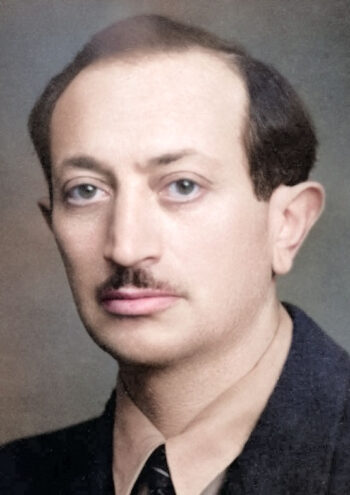Wiesenthal, Simon

Simon Wiesenthal (31 Dec. 1908 – 20 Sept. 2005) was a Galician Jew (today’s western Ukraine) whose wartime history is unclear, because he has made conflicting statements about it. At one point, he claimed to have been slated for a mass execution with thousands of other Jews, but at the very moment, when it was his turn to get shot, his name was miraculously called out by someone, and he was led away. This unlikely turn has caused skepticism even among mainstream historians, calling Wiesenthal’s description of the event “apocryphal” (see Walters 2009, pp. 85f.)
He claimed in one text that he joined the anti-German and anti-Ukrainian pro-Stalinist partisans in late 1943, but was caught by the Germans in June of 1944, leading to the miraculous shooting story just mentioned; in another account, he simply stated that he was in hiding during that time, which is probably the truth. After an ordeal of westward evacuation, he ended up at the Mauthausen Camp, where he was liberated.
After the war, he remained in Austria and instantly started collecting information on alleged National-Socialist war criminals with the aim of bringing them to justice. He quickly gained the support of U.S. occupational authorities, and after the creation of Israel, he closely cooperated with that state’s secret services. In 1960, he officially became a Mossad agent, drawing a monthly salary from them. As Israeli author Tom Segev writes in his 2010 biography of Wiesenthal, he had an ambivalent relationship to the truth. As a true Mossad agent, spreading information and disinformation was all part of the game. The “truth” was clearly subordinated to political purposes.
Although Wiesenthal could contribute nothing to the orthodox Holocaust narrative as a witness, he used his influence to spread information and disinformation about what happened to the Jews in Europe during World War II. For instance, in 1946, he published a brochure on the Mauthausen Camp mainly containing his own sketches trying to depict the horrors of this camp. One drawing allegedly depicts three inmates bound to posts and brutally put to death by the Germans. However, he copied this picture from a photo that had appeared in Life magazine in 1945 showing the execution of three German spies in December 1944. In his brochure, Wiesenthal also made use of the phony “confession” allegedly extorted from Mauthausen commandant Franz Ziereis by former inmates while Ziereis was bleeding to death.
For years, Wiesenthal has repeatedly spread the false claim that the fat of murdered Jews was used to manufacture soap. He also spread the false story, invented by Stefan Szende in 1944, that people were killed with electrocution at Belzec.
Wiesenthal did not hesitate to invent “Nazi criminals” either, as the case of Polish-born Chicago man Frank Walus proves. Wiesenthal framed him as a Gestapo agent who committed atrocities in Poland during the war. However, during an extended court case, Walus proved that he had been working on a German farm all through the war and was never in Poland, let alone committed any crimes there.
Much of Wiesenthal’s claim to fame as a “Nazi Hunter” is smoke and mirrors, although he certainly also had his successes. He moreover provided considerable assistance toward organizing witnesses testifying against individuals accused of having committed war crimes. Furthermore, with his dis/information services, he surely also influenced the testimony of many witnesses – but certainly not toward being more truthful.
Another lingering legacy of Wiesenthal is the claim that the Holocaust had not six million victims, but 11 million. However, he made up that figure without having any basis for it, as quite a few mainstream scholars have complained over the decades. Wiesenthal wanted to sell the Holocaust to the gentiles, and in order to pique their interest, he threw in five million non-Jewish victims, just a million short of the claimed Jewish death toll of six million, in order to ensure Jewish victimhood supremacy. Again, truth was relegated to the back bench.
(For more details, see Weber 1995b, Rudolf 2023, pp. 15-17, 73; Segev 2010.)

You need to be a registered user, logged into your account, and your comment must comply with our Acceptable Use Policy, for your comment to get published. (Click here to log in or register.)